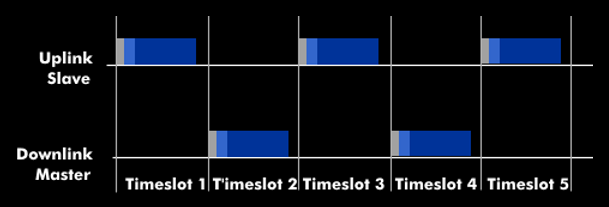time division duplex (mobile communications) (TDD)
Time Division Duplex(TDD) is a time division multiplex(TDM) for radio transmissions. With this radio technology, the radio channels of the uplink and downlink are separated between the receiving station and the base station. In the TDD method, the uplink and downlink use the same transmission frequencies in time division multiplex with periodic switching.
To ensure that the uplink and downlink traffic are cleanly separated, safe areas are established both between the individual frames and between the transmit and receive data.
In the TDD method, the available bandwidth can be used efficiently if the data rate can be varied during operation in the temporal transmission frame. This allows bandwidths to be allocated to the upstream and downstream. TDD can thus be operated symmetrically and also asymmetrically.
The TDD method is used, among other things, for cordless telephony( CT), UMTS and Bluetooth. The alternative method for duplex operation of radio channels is the FDD method, which is based on frequency division multiplexing.

